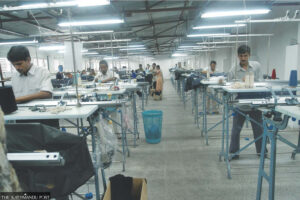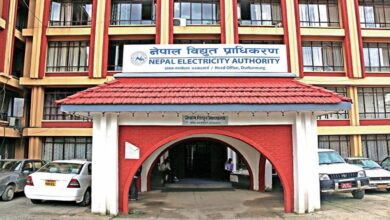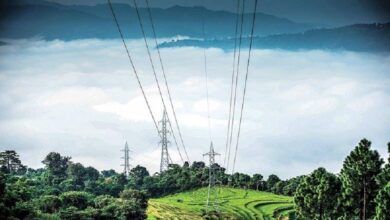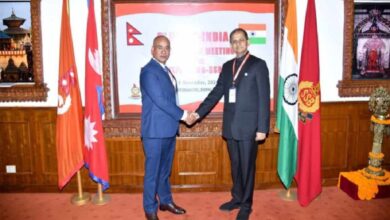
Kathmandu: Nepal’s unemployment rate has been increasing, according to a report.
The fourth Nepal Living Standard Survey report, published by the National Statistics Office on Thursday, shows that the unemployment rate climbed up to 12.6 percent in 2022-23 from 11.4 percent in 2017-18, representing a 1.2 percent rise in the five-year period.
The unemployment rate has risen from 4.9 percent in 1995-96 to 12.6 percent in 2022-23.
This rise is more pronounced among younger workers, with the unemployment rate for those aged 15-24 jumping from 7.3 percent in 1995-96 to 22.7 percent in 2022-23. The report said this highlights the challenge of finding jobs for youths in Nepal.
The survey report shows joblessness among people between the ages of 15 and 24 declined to 22.7 percent in 2022-23 from 23.9 percent in 2017-18.
“Most worrying is the rise in unemployment in the past five years, which increased by 1.2 percent, and that’s worrisome,” said Hem Raj Regmi, deputy chief statistician at the statistics office. “The economy has failed to generate enough jobs for its large and expanding young population.”
The population structure has shifted towards a younger working-age population, with a decrease in the proportion of children (0-14 years) and an increase in the proportion of adults (15-59 years).
This trend is further supported by a declining dependency ratio, suggesting a growing workforce. The proportion of the elderly population (60 years and above) has increased.
Regmi said the age between 15 and 24, the most productive time for an individual, is not considered the working age in Nepal, as these people are involved in education and training.
“At this age, our survey has found, people will work only if they are offered a job. The responsibility to earn money grows in later years.”
The survey data on employment status reveals significant shifts in the labour market between 1995-96 and 2022-23. The percentage of those with jobs has declined considerably from 67.2 percent in 1995-96 to 32.4 percent in 2022-23, while the percentage of those not in the labour force has increased from 29.4 percent to 62.9 percent.
The share of wage employment in agriculture has significantly declined from 70.7 percent in 1995-96 to 1.9 percent in 2022-23. The share of wage employment in non-agriculture, on the other hand, has risen considerably from 9.5 percent in 1995-96 to 56.6 percent in 2022-23.
The survey report shows that 32.4 percent of the population is employed, 62.9 percent is not in the labour force, and 4.7 percent is unemployed.
The labour force participation rate came down to 37.1 percent in 2022-23 from 38.2 percent five years ago.
“The employment condition in Nepal is the worst,” said economist Pushkar Bajracharya. “The government failed to create jobs. This is because the investment environment has not been favourable in past years, mainly due to political and policy uncertainty. When there is no investment, there is no job creation.”
Bajracharya said the unemployment rate would further jump due to the repercussions of the Covid-19 pandemic and the recession and slowdown the country has seen.
“Many industries, service sectors and companies are still laying off workers due to the economic slowdown. There is low demand for labour in the country as the key economic sectors—construction and manufacturing—are facing recession, while wholesale and retail have shown a slight recovery,” said Bajracharya.
Experts say that while the overall unemployment rate is low, the jobs being created in Nepal’s economy are not of quality. There is a need for new strategies, new partners, and new goals.
Each year, around a million Nepali youths, including students, leave the country to try their luck abroad.
The survey data on remittances and transfers reveals a significant increase in the prevalence and magnitude of remittances received by households in Nepal between 1995-96 and 2022-23.
The percentage of households receiving remittances has increased dramatically from 23.4 percent in 1995-96 to 76.8 percent in 2022-23, indicating a significant rise in the number of Nepali families relying on the money sent by their members working abroad.
This increase is consistent with the observed growth in average remittances per household, which has significantly increased from Rs15,160 in 1995-96 to Rs145,093 in 2022-23.
Remittances (other than from India) are quite dominant, highlighting the importance of international migration for income generation.
Remittances from India declined from 32.9 percent in 1995-96 to 11.1 percent in 2010-11, but they have increased since, reaching 21.3 percent in 2022-23, according to the survey report.
The survey data on household loans shows that the percentage of families borrowing money is relatively stable (61.3 percent in 1995-96 and 63.8 percent in 2022-23). However, the percentage of households with outstanding loans has significantly increased, from 58.4 percent in 1995-96 to 97.3 percent in 2022-23.
The data also reveals a shift in the sources of household loans. Traditional money lenders were previously a dominant source (39.7 percent in 1995-96), but their share significantly decreased to 11.4 percent in 2022-23.
The share of loans from banks has increased (from 16.1 percent in 1995-96 to 22.4 percent in 2022-23), while loans from relatives continue to remain significant (40.8 percent in 1995-96 to 42.5 percent in 2022-23).
Household consumption as a reason for borrowing has been declining (from 49.4 percent in 1995-96 to 23.5 percent in 2022-23). This could be attributed to improved access to essential goods and services or a shift to other borrowing needs, the survey report shows.
The use of collateral has also shifted, with an increase in the proportion of loans taken with collateral. While 16.8 percent of loans were taken with land and house collateral in 1995-96, this share increased to 35.1 percent in 2022-23.
The data shows a noticeable shift in the dominant sectors of non-farm activities. While trade was previously the most prevalent sector (52.1 percent in 1995-96), it has declined (42.5 percent in 2022-23). The share of manufacturing has also decreased from 29.9 percent in 1995-96 to 22.6 percent in 2022-23.
Similar is the case with the service sector enterprises, which decreased from 29.2 percent in 2003-04 to 7.2 percent in 2022-23. The percentage of registered enterprises has increased significantly from 11.7 percent in 1995-96 to 52.6 percent in 2022-23, indicating greater adherence to regulations and potentially better access to resources and support.
Data on wage employment in 2022-23 provides insights into the nature of work and earnings in Nepal. The average number of daily working days for wage earners in the past year is 72.
Daily wage jobs keep 64.9 percent of people busy. This suggests a need for more secure and stable employment opportunities for most of the workforce. While long-term jobs with monthly salaries account for 28.7 percent, contract-based work constitutes only 6.4 percent.
According to the survey, nominal income levels in Nepal increased substantially from 1995-96 to 2022-23. The average household income increased more than twelvefold, from Rs43,732 in 1995-96 to Rs551,148 in 2022-23.
Similarly, the average per capita income rose significantly from Rs7,690 to Rs136,707 over the period. This growth was uneven across income groups: the per capita income of the poorest 20 percent of the population grew from Rs2,020 to Rs61,335, while that of the wealthiest 20 percent surged from Rs19,325 to Rs259,867.
The composition of household income also shifted markedly, with the share of farm income dropping from 61 percent in 1995-96 to 16.8 percent in 2022-23, reflecting a transition to non-farm and other income sources. Remittances make up an important share of this income.
The survey also shows a shift in cropping patterns—the percentage of land holdings growing paddy has decreased from 76 percent in 1995-96 to 64.3 percent in 2022-23. The percentage of holdings growing summer vegetables has increased from 35.6 in 1995-96 to 39.3 in 2022-23. Likewise, the percentage of holdings with cattle has declined significantly from 73.5 in 1995-96 to 37.8 in 2022-23.
The literacy rate for the population aged 5 years and above has substantially increased (from 37.8 percent in 1995-96 to 77.4 percent in 2022-23). This positive trend is also visible in the adult literacy rate (15 years and above), which has risen (from 35.6 percent in 1995-96 to 72.5 percent in 2022-23), highlighting significant progress in literacy among the adult population.
This improvement is more noticeable among males, with the literacy rate increasing from 53.5 percent in 1995-96 to 82.9 percent in 2022-23. For the females, the increase is from 19.4 percent in 1995-96 to 64.1 percent in 2022-23.
The data also shows a significant increase in school attendance among the population aged 15 years and above, with 33.9 percent having attended school in 1995-96 compared to 70.2 percent in 2022-23.
This trend is again more noticeable among males, with school attendance increasing from 50.2 percent in 1995-96 to 81.4 percent in 2022-23. For females, attendance increased from 19.1 percent in 1995-96 to 61.1 percent in 2022-23.
The survey data on health services paints a mixed picture of health status and access to healthcare in Nepal between 1995-96 and 2022-23. The population reporting chronic illnesses grew from 6.5 percent in 1995-96 to 18.5 percent in 2022-23, indicating a potential rise in non-communicable diseases.
There has also been a significant increase in the percentage reporting acute illnesses—from 9 percent in 1995-96 to 24.9 percent in 2022-23, suggesting a potential shift in disease patterns or reporting practices. A decline is observed in diarrhoea from 17 percent in 1995-96 to 6.6 percent in 2022-23, potentially indicating improved sanitation and hygiene practices.
Cold/fever remains a significant concern, increasing from 43.7 percent in 1995-96 to 51.5 percent in 2022-23. The percentage of those consulting a doctor has remained relatively stable (around 29 percent), and the percentage consulting a paramedic has significantly decreased.
Migration patterns within Nepal reveal significant shifts in trends between 2003-04 and 2022-23. While the overall percentage of the migrant population within the country has remained relatively stable—36.6 percent in 2003-04 and 38.1 percent in 2022-23—there is a notable shift in the gender composition of migrants.
Males constituted a higher proportion of migrants in 2003-04 (50.1 percent), but females made a larger share of the migrant population (49.6 percent) in 2022-23. A decline in the percentage of migrants from rural areas in 2022-23 indicates a potential shift in migration patterns, possibly driven by changing economic opportunities and societal factors.
The analysis of reasons for migration reveals that family remains the dominant factor (75.2 percent in 2003-04 moving within the country for family reasons and 74.9 percent in 2022-23).
The fourth Nepal Living Standards Survey, conducted in 2022-23, is the first such survey since the country’s transition to a federal system. Data was collected from a nationally representative sample of 9,600 households on a wide range of topics.




